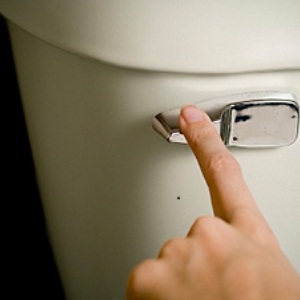
Since time immemorial, the disposal of sewerage waste has been a major problem for human communities. Today many people use the flush toilet without giving it a second thought. But where does it come from? What did people do before then?
For hundreds of thousands of years, the toilet and the nearest bush were synonyms. For many people it still is, as it is estimated that at least half of the world's population does not have access to piped, clean water.
Water closets
The water closet is very old – some of the first ones were found in the Palace of Knossos which was built by King Minos. It even had a wooden seat and worked much like flush toilets do today. Indoor bathrooms appeared in the Indus Valley 2000 B.C. and the waste from these were carried to street drains. In Elizabethan England, the water closet was briefly used, but did not make its reappearance until the 18th century.
In 1860, the Reverend Henry Moule invented the earth closet – a variation of the pit closet, which had been used for many centuries. The user of the earth closet, pulled a lever after use and released a layer of earth, charcoal or ashes into the bucket. The container was emptied at intervals. Generally, when pit closets were full, they were closed up and another dug a short way away. This was obviously impractical in urban areas, where space was at a premium.
Pots and dung heaps
During the Middle Ages in Europe, people used pots, which were often simply emptied out of the nearest window, which goes a long way to explaining why the bubonic plague, and the rats that spread it, had such a field day in the 1400s, 1500s and 1600s. Cholera was also a growing problem in filthy cities, especially if water was drawn from the same rivers into which human waste was thrown.
In rural areas, people simply added to the dung heap near the farmhouse. At first farmers collected these waste products to use as fertiliser, but as the city grew, this became uneconomical and people dumped their waste into the nearest river, which obviously caused problems for those living downstream.
The flush toilet
The flush toilet was not invented by Thomas Crapper, as folklore would have it. He was an invention of British author Wallace Reyburn, who wrote a fictional biography of Thomas Crapper, called "Flushed with pride".
The first time the general public had easy access to flush toilets was at the Great Exhibition in the Crystal Palace in 1851. This helped to spread their popularity greatly. The London sewers, made to deal with rainwater, however, clogged up quickly with the sludge and this became a problem in itself.
Of all household appliances, the flush toilet is the single biggest water user. The cost of centralised waste treatment is also relatively high, which puts this system out of reach of many developing countries. The sheer volume of sewerage waste in large cities is quite staggering. Dealing with this, is often a very demanding task for city engineers.
So next time you flush the loo, spare a thought for all those who don't have one to flush and all the people, who for millions of years used the Great Outdoors as a giant toilet. And still do.
Read more:
The toilet: problems and solutions
(Sources: localhistories.org; trivia-library.com; Bill Bryson: At home)
(Susan Erasmus, Health24, updated November 2010)




 Publications
Publications
 Partners
Partners










